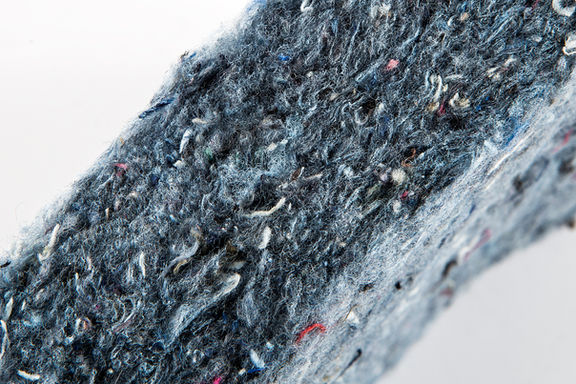NATURE POD - DIY kit - 5000 €
NATURE POD - DIY kit - 5000 €
INSULATION & SIDING
Insulation options
Recycled textile
Recycled textile insulation is an environmentally friendly insulation material produced mainly from recycled textile. It consists of 90% recycled clothing and the clothing collection and sorting is done by people with a disadvantage in the labour market. It has approximately the same insulation value as our environmentally friendly sheep wool insulation.
Find out more here: https://en.vrk-isolatie.nl/isolatie
Siding options
Spruce is the wood most commonly used for exterior facades in all of Scandinavia. It is low in weight and has medium density. The strength properties are good. Its cellular structure makes it more resistant to moisture compared to pine for instance and it is very durable when painted or stained. It is also readily available making it a cost effective option.
ThermoWood outer siding
ThermoWood is Scandinavian pine wood that is heated in special ovens to 180 - 230°C for several days using only heat and steam - i.e. no toxics whatsoever. The addition of steam prevents cracking and the oxygen content in the air is kept low to prevent the wood from burning up. In the process, the chemical properties of the cell walls of the wood change, giving the wood a greater resistance and durability to both rain, sun and wind. In fact, the facade does not need to be painted for protection as necessary with untreated wood. The process of heating destroys the nutrients in the cells and it thus becomes completely uninteresting for both fungi and insects. Furthermore, ThermoWood contains and absorbs very little water, which means that the dimensional stability is increased by 50% leading to a more airtight gap and crack free construction. ThermoWood also has larger pores than untreated wood which increases the insulation capacity by up to 30%. Finally, ThermoWood is lighter than for instance the more commonly used untreated spruce, making it an excellent choice for your lightweight tiny house.
Shou sugi ban (Yakisugi) exterior siding
Shou sugi ban is an old, traditional Japanese method of wood preservation. Instead of heating the wood in a stove (as with ThermoWood, see above) using the traditional technique of Shou sugi ban, the wood surface is directly burned with fire. Just as with ThermoWood this results in a natural, totally non-toxic protection and a more durable facade. Amongst other things the facade acquires a natural resilience against moisture and insects, it is protected against rot and mold and gains an increased dimensional stability leading to fewer cracks and gaps. The big difference between ThermoWood and Shou sugi ban, is their appearance in regards to color and texture. While ThermoWood retains its smooth wooden texture and gains a golden-brown glow, a shou sugi ban facade has a beautiful rough, burned texture and coal dark colour.
Oxygenwood exterior siding
The Oxytree is a hybrid tree resulting from the crossbreeding of two species: Paulownia Fortunei and Paulownia Elongata. This hybrid was developed by a Spanish biotechnology company primarily for utility purposes. Almost all parts of the plant are useful. The trunk serves as an excellent raw material for high-quality wood, which is highly valued in the furniture and construction industries, while the branches and cuttings, known for their high energy value, make excellent fuel. The wood from the plant is smooth, durable, lightweight, and becomes waterproof after drying. The Oxytree is one of the fastest-growing trees in the world; it can reach a height of 16 meters and a trunk diameter of 20-30 cm within just 6 years. It also recovers exceptionally well after being cut, enabling subsequent harvesting in just a few years.
Compare all four options:
Choose spruce outer or inner siding if you are looking for locally produced, well performing, cost effective wood used as facade material in all of Scandinavia for many centuries.
Choose ThermoWood outer siding if you are looking for locally produced, durable, beautiful wood that has the same outstanding performance as cedar but for a cheaper price.
Choose Shou sugi ban if you want the same excellent qualities as ThermoWood but with a beautiful rough coal-black surface.
Choose Oxygen wood if this new invention sounds like a valuable add-on option for you.


